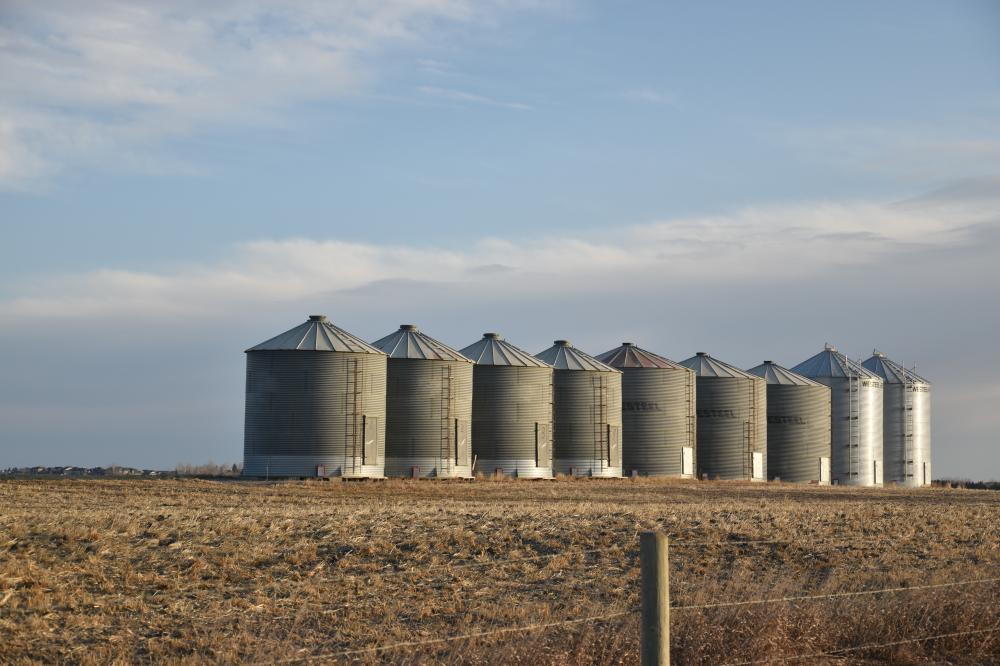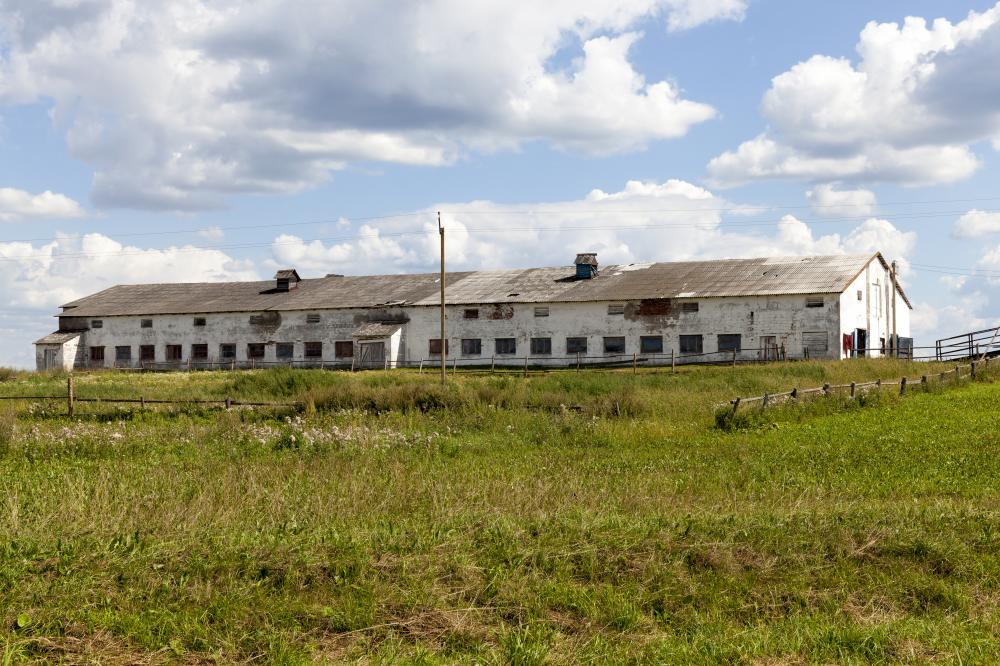
Introduction to Dairy Buildings
At Freedom Buildings, we’ve spent over three decades mastering the craft of designing and installing durable and efficient fabric buildings for a variety of uses, including those in the dairy industry. Dairy buildings play a crucial role in the agriculture sector by providing a sheltered environment that enhances livestock health, feeding efficiency, and overall herd well-being. Drawing from our extensive experience, we offer our perspective on the significance of well-constructed dairy buildings and how they contribute to the operational success of dairy farms.
Benefits of High-Quality Dairy Buildings
Improved Livestock Health
One of the primary benefits of well-designed dairy buildings is the positive impact on livestock health. Our fabric buildings are engineered to ensure adequate ventilation and natural light, two factors that significantly contribute to the well-being of dairy cattle. Proper ventilation reduces the risk of respiratory issues, while natural light has been shown to improve milk production and animal morale.
Operational Efficiency
In our experience, dairy farms that invest in high-quality buildings often witness improved operational efficiency. The clear span design of our fabric structures eliminates internal columns, allowing for easier movement of animals and machinery. This design feature also facilitates efficient waste removal and simplifies the overall maintenance of the building.
Critical Considerations for Dairy Building Design
Adaptability and Future-Proofing
One aspect we emphasize to our clients is the importance of adaptability in the design of dairy buildings. The dairy industry is continuously evolving, and buildings need to be able to accommodate future changes in herd size or milking technologies. Thus, we design our structures with flexibility in mind, allowing for easy expansion or modification with minimal disruption to daily operations.
Environmental Sustainability
Another crucial consideration is the environmental impact of dairy buildings. Our approach includes the use of sustainable materials and designs that minimize energy consumption. For instance, the fabric cover of our buildings reflects sunlight, reducing the need for artificial cooling and thereby lowering energy costs.
Challenges and Innovative Solutions in Dairy Building Construction
The construction of dairy buildings presents unique challenges, such as maintaining a balance between durability and the comfort of the livestock. Through years of collaboration with dairy farmers, we’ve innovated solutions that address these challenges effectively. For example, our tensioned fabric buildings are designed to withstand harsh weather conditions while providing a comfortable and healthy environment for cattle.
Real-World Success Stories
Our portfolio includes numerous successful installations that have transformed the operations of dairy farms across the United States. One notable project involved designing a custom dairy building that significantly increased the productivity and health of the herd. Feedback from the farm’s owner highlighted the dramatic improvement in milk production and the reduced incidence of livestock illnesses.
Ensuring the Longevity of Dairy Buildings
Regular Maintenance Tips
Maintaining the integrity and functionality of dairy buildings is essential for maximizing their lifespan. We advise regular inspections to identify and address any potential issues, such as tears in the fabric or structural weaknesses. Preventive maintenance, including proper cleaning and timely repairs, ensures that buildings continue to provide optimal conditions for dairy operations.
Customized Solutions from Freedom Buildings
Our commitment at Freedom Buildings is to deliver customized fabric building solutions tailored to the specific needs of the dairy industry. We understand that each dairy farm has unique requirements, influenced by factors such as climate, herd size, and operational practices. Our team works closely with clients to design and install buildings that meet these needs, backed by quality construction and exceptional customer service.
Conclusion
In conclusion, the role of dairy buildings in ensuring the efficiency and sustainability of dairy farming operations cannot be overstated. At Freedom Buildings, we are proud to contribute to the success of the dairy industry through our expertise in fabric building solutions. By focusing on quality, durability, and adaptability, we help our clients achieve their operational goals and ensure the well-being of their livestock. As the dairy industry continues to evolve, we remain committed to innovating and improving our building solutions to meet the ever-changing needs of dairy farmers.

What are the different types of dairy buildings?
When talking about dairy buildings, it’s like discussing the many layers and flavors in a gourmet cake. Each layer serves a unique purpose, contributing to the overall success of dairy operations. At Freedom Buildings, we’ve seen firsthand how diverse these structures can be, ranging from freestall barns, which offer cows the freedom to roam and rest in individual stalls, to specialized milking parlors that streamline the milking process with efficiency and animal comfort in mind. Then there are dry cow barns, focusing on the needs of non-lactating cows, and calving barns designed for the critical moments of birthing and newborn calf care. Each type has its special role, crafted to support specific aspects of dairy farming, enhancing both productivity and animal welfare.
Are you wondering how to choose the right type of dairy building for your farm’s specific needs? Feel free to ask or share your thoughts in the comments below.
What is a dairy barn?
A dairy barn is not just a structure; it’s the heartbeat of a dairy farm. It’s where the magic happens, from housing and feeding the herd to milking and caring for the animals. At Freedom Buildings, we view dairy barns as a sanctuary for cattle, designed to protect them from the elements and provide a comfortable living space. These barns are equipped with features like proper ventilation, natural lighting, and ample space, all aimed at promoting the health and productivity of the herd. It’s about creating an environment where cows can thrive, contributing to the overall success and sustainability of dairy operations.
Curious about how a customized dairy barn could transform your farm? Let’s start that conversation in the comments below.
What is a stanchion barn?
A stanchion barn, often visualized as the traditional image of a dairy farm, is where cows are individually secured in stanchions or stalls for feeding and milking. This type of barn allows for close monitoring and care of each animal but requires cows to be moved to a separate location for milking. With our experience at Freedom Buildings, we’ve seen how the industry is shifting towards more open, flexible systems that prioritize animal welfare and operational efficiency. However, stanchion barns can still be found and serve their purpose, especially on smaller farms or those with specific operational models. It’s all about finding the right balance that works for each unique dairy operation.
Thinking if a stanchion barn is right for you? Drop your thoughts or questions below, and let’s discuss.
What are the unique benefits of using fabric buildings for dairy operations?
Imagine a building that not only shelters your dairy herd but also enhances their well-being and your farm’s productivity. That’s what fabric buildings offer. At Freedom Buildings, we’ve championed the use of fabric buildings for several reasons. Their translucency ensures natural light permeates the space, promoting healthy circadian rhythms and potentially increasing milk yield. The ventilation qualities of these buildings create an environment with fewer airborne pathogens, contributing to better respiratory health for the herd. Moreover, the clear span interior — free of columns — offers unparalleled flexibility in layout and usage, allowing for efficient herd movement and machinery operation. It’s a modern solution that aligns with the dynamic needs of dairy farming today.
Ever wondered how a fabric building could fit into your dairy operation’s future? Share your thoughts or ask questions below.
What are the best practices for maintaining dairy buildings to ensure their longevity?
Maintaining dairy buildings, especially those as innovative as fabric structures, is akin to nurturing a valuable investment. At Freedom Buildings, we stress the importance of regular inspections to catch and address issues early, whether it’s wear and tear on the fabric or checking the integrity of the structure. Proper cleaning practices are also paramount, not just for the building’s longevity but for maintaining a healthy environment for the cattle. Preventive measures, such as ensuring adequate drainage around the building to prevent water damage and reviewing the building’s ventilation system to adjust for seasonal changes, are critical. Remember, the goal is to protect your dairy operation’s heart, ensuring it beats strong for years to come.
Have questions about maintaining your dairy building, or have tips to share from your experience? Let’s get the conversation going in the comments below.
Resources
- United States Department of Agriculture – The USDA offers valuable information on dairy farming practices, regulations, and resources for farmers.
- Purdue University Extension – Purdue University provides research-based information on dairy production, management, and building design.
- University of Minnesota Extension – The University of Minnesota Extension offers insights on dairy facility design, ventilation, and environmental sustainability.
- Natural Resources Conservation Service – The NRCS provides conservation resources and technical assistance for dairy farmers looking to improve their buildings’ sustainability.
